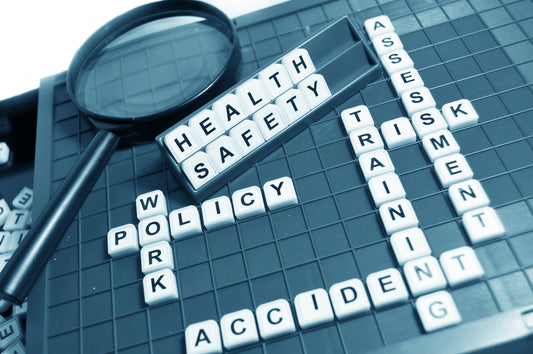Safety talks are a complete package of safety training sessions. They teach hazard identification methods to improve safety at work. Participants learn how to manage hazards and risk to avoid workplace injuries.
The course contains short videos that include support material, including discussion questions. Participants will be able identify hazards and assess risks by the end.
More information about this course
OHS.com.au is a training provider with AlertForce (RTO Code 91826).
Online Location
Course length: Approx. Course duration: Approx. 4 hours
Time: Self-paced
Certification / Accreditation Certificate of Completion
CPD points: Yes. 4 points are a certificate of completion
Background – What will I learn?
This Why Safety Matters Course covers these topics:
- Accident causation analysis
- Safety auditing
- Change management process
- Communication skills
- Safety barriers
- Hazard identification
- Incident reporting
- Get inspired by past events
- Major hazards
- Organizational structure to manage risks
- Cutting costs is a danger
- Signs to warn you of potential dangers
This course is intended to make workplaces safer.
The Course Objectives and Aims
Safety Talks Course includes 12 modules that help you identify workplace hazards and implement hazard control measures to keep them from happening.
Each module includes one or more videos covering different topics related to workplace safety, health, and hygiene. This support material includes a script, discussion question, activities, and reference material.
Participants are able to create an action plan specific to their company's needs by answering the questions and completing the modules.
SUGGESTED USE
Safety Talks Course participants should watch the videos and engage with group discussions after they are finished. Facilitators can also review key points from each module and video using the support material.
There are many options to view and join discussions.
* E-learning Format
Face-to-face safety meetings
* Forum
Participants have the option to upload training videos to elearning and view them online. Participants are able to review the support material and answer questions online.
Face to face safety meetings allow participants the opportunity to view videos and engage in discussions. However, it can be logistically difficult.
The videos can be uploaded to a forum. Users can access the videos and any other support materials through a private forum or company website. Each section contains the answers to all your questions.
After watching the videos, participants can email their answers to discussion questions.
SUPPORT MATERIALS
Regardless of how the material is presented, everyone should have access. Participants may use the questions to discuss the impact of safety practices on the organization.
Each module contains scripts and other reference materials This allows participants to review the lessons and conduct research.
Participants and facilitators can use the video scripts to create an action plan. Participants can follow the steps and offer suggestions for how to implement the plan at work.
MODULES FOR COURSES
Safety Talks Course consists of 12 modules. Facilitators can choose to select the modules that best represent their organization's safety concerns. The following is a summary of each lesson.
ACCIDENT CAUSATION ANALYSIS MODULE
The Accident Causation Analysis module contains "The 5 Whys". This module shows how asking specific questions can lead you to the answers and reveal the core issues.
We discuss safety barriers in the accident causation analysis module. However, many workplace accidents can be attributed to a lack safety barriers.
Workers must understand that there are greater defenses against hazards. Multiple barrier increases the safety of the situation.
MODULE SAFETY AUDITING
Safety Auditing addresses both the advantages and drawbacks to safety audits. This module also addresses behaviors that could lead to injuries or accidents.
This module discusses the advantages of safety audit methodology. An audit can create a false sense of security.
An audit is not effective if it fails to get people to change their behaviour and follow safety protocols. This course examines behavioural safety and how individuals affect workplace safety.
MODULE FOR CHANGE MANAGEMENT
The Organisational Change Management module describes how to implement new safety procedures. This module covers:
* Change management
* Technical support
* Alarm systems
* Interconnection
* An inadequacy mental model
Sometimes, it is necessary to redesign a process in order to make it more efficient. Organisations must adopt a change management approach to implement safety measures.
This module discusses the dangers associated with redundant control systems and interconnection. The course also covers alarm flooding and how professional engineers may help you to develop better hazard management systems.
MODULE ON COMMUNICATION SKILLS FOR EXECUTIVES
Executives need to have good communication skills in order to make sure workers and supervisors understand their roles and responsibilities during Safety Talks. This module covers:
* Poor communication during shift changes can have serious consequences
* Employee feedback is important
Top Tips for Talking with Workers
* It's important to have one-on-one conversations rather than group discussions.
What are the topics and questions that workers should ask
This module demonstrates how executives and supervisors should interact with workers during walk-arounds and site inspections.
DEFENCE IN DEPTH MODULE
Take into account the importance of multiple safety systems and defense systems to guard against dangers. This module examines defense using a specific disaster.
Participants will understand that defenses can fail if they have only one failure point.
Participants will also discuss the consequences of confirmation bias. Safety gaps can lead to more injuries and accidents.
HAZARD IDENTIFICATION MODULE
Hazard Identification module teaches how to identify workplace risks. These are steps in a typical hazard management process:
* Define hazard
* Assessment of the risk
* Making changes (risk management measures)
Supervisors and workers can identify the hazards and take appropriate safety precautions. Individual safety refers only to safety measures that are taken by an individual.
This module discusses the need for "safety case" programs to ensure compliance with federal legislation.
INCIDENT REPORTING SYSTEMS MODULE
This module discusses how important it is to report incidents and explains the different reporting systems. This module explains that organisations should report warning signs instead of reporting only incidents that result in injury or loss.
This module covers both the design and implementation of reporting systems, as well as how to create clear warning signs.
This module's last section describes how leaders can use surveillance systems to collect as much information as possible to identify the source of the safety incident.
LEARNING FROM OTHER INCIDENTS MODULE
Learn from other incidents modules are based upon the need to learn from the past to avoid making the same mistakes again. Workers learn to review past incidents to prevent repeating them.
Learn how to report incidents from the previous module. Workers and supervisors can also report incidents to try and determine the root cause.
Learning from past events can help prevent future incidents.
MANAGEMENT OF MAJOR HAZARDS - THE USE OF INDICATORS MODULE
Supervisors may use indicators to assess if major hazards have been managed effectively or are threatening productivity.
This module discusses how indicators can be used to evaluate the effectiveness of hazard-prevention measures. This module gives an overview of the best indicators to manage major hazards at work.
ORGANISATIONAL STRUCTURE - ITS EFFECT ON MANAGING RISK MODULE
The Organisational Structure module gives a detailed look at the importance and benefits of having a structured hierarchy to manage risk. These are key topics:
* Organisational design
* Lines for authority
Safety Departments for Corporate Employees
This module discusses the importance of managing major hazards at the corporate level. It's easier to review and to implement safety practices once the structure has been established.
RISK OF MANAGING COSTS MODULE
The module Risk of Managing Costs explains how safety can be compromised by cutting costs, especially when it comes down to maintenance. Accidents and injuries are more likely to happen if there is poor maintenance.
The module also explores incentive schemes to encourage safety.
This module also discusses safety first, profit and unconstrained pressure. Putting too much emphasis on commercial risks can make it more likely that you will have to deal with major workplace hazards.
WARNING SIGNS: HOW THEY MAY BE IGNORED MODULE
Warning signs explains the advantages and drawbacks of warning signs and warning systems. This module covers
Why do people ignore the warnings
Reasons workers might ignore warning signals
Understanding that all things can be dangerous until they're proven safe
How "groupthink” can lead to safety hazards
The module also includes a video that shows how warning signs are often ignored in major accidents. Supervisors can learn more about warning signals and how to avoid them in order to improve their monitoring systems.
SUMMARY
Safety is a top priority for all workers, regardless of their position. Participants learn to perform safety audits and implement safety procedures that reduce workplace injuries.
This course covers workplace injuries prevention and risk assessment. This course will help you to create a safer work environment.
Participants learn to recognize and prevent hazards from occurring. The course can be customized to fit your workplace.
AlertForce offers Safety Talks Course. AlertForce has extensive experience in creating safety training courses.
You can find many safety courses all over the country. There are also safety courses that can be taken online.
Register for the Safety Talks Course.
 1300 307 445
1300 307 445












